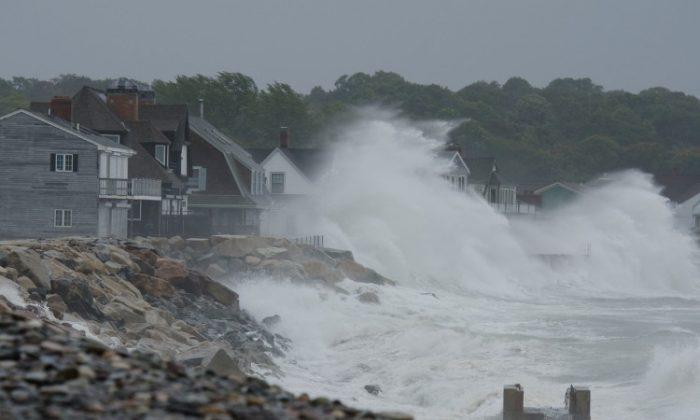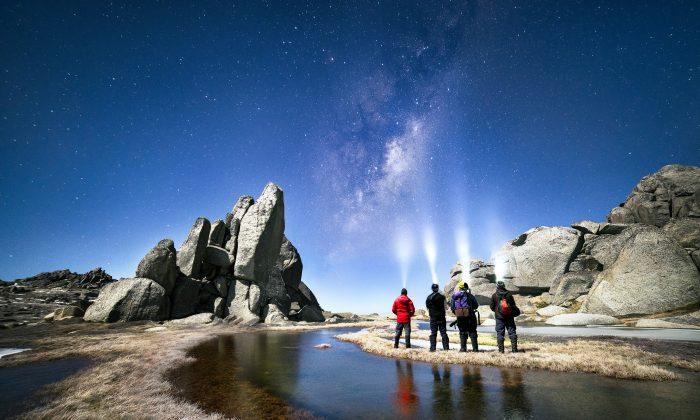The United States had 14 extreme weather events in 2011, each costing over $1 billion. The rise in these events not only impacts administrative planning in counties and cities, but is also dramatically affecting the insurance industry.
According to Dr. Jeff Masters, meteorologist with online weather forecasters Weather Underground, 2011 has been a unique year.
Masters, a meteorologist for over 30 years, says three or four extreme weather events is the national average, but 2011 broke the previous record of nine events in 2008.
“Looking back on historical records, which go back to the late 1800s, I can’t find anything that compares,” he said via a teleconference organized earlier this week by the U.S.-based Union of Concerned Scientists (UCS). The nonprofit organization coordinated the event to coincide with the release of the Intergovernmental Panel on Climate Change’s impending report on managing extreme weather events, due Nov. 18.
Data released in August from the National Climatic Data Center, which houses an active archive of weather data, detailed 10 extreme weather events this year. Two of the events were the January–February Groundhog Day blizzard, which killed 36 people and brought Chicago to a standstill, and Hurricane Irene, which killed 46 people and cut off electricity supplies to some 7 million businesses and households in late August.
Since August, Masters says weather events that surfaced include Tropical Storm Lee in September, which brought record floods to areas along the Susquehanna River, the longest river on the U.S. East Coast; and the October snowstorm in the northeast, which to date has cost Connecticut alone an estimated $3 billion.
Extreme events this year cost an estimated $50 billion, Masters said.
Insurance Industry Nervous
It is no wonder the insurance industry is becoming nervous.
Rowan Douglas is CEO of Willis Analytics, a new arm of the global insurance company Willis Group, set up to advise companies on the financial impact of natural catastrophes.
Speaking to the teleconference from his office in London where he said the focus has been on the floods in Thailand, Douglas said predictability of extreme weather events around the world is now critical. Historical data is no longer enough, and formulating predictions requires new allegiances between climate scientists, public policy analysts, and the insurance industry.
Presently, insurance companies pay a levy, just like individuals, for insurance in catastrophe prone areas. The levy goes into a central fund that is used to buffer the industry against natural catastrophes.
Predicting how much capital was required to withstand demands during times of crisis was critical in maintaining the resilience of the insurance industry, Douglas explained, with companies looking as far ahead as “10, 20, or 30 years into the future.”
“Climate science is moving into an era where it can give insurers real insight to the events of greatest concern,” he said.
Douglas said another area of change in the industry, which he described as a “megatrend,” was the insurance industry’s focus now on mitigation and adaptation not only at the global level, but also at the local level.
“That is also a major driver bringing the world of science, insurers, and public policy closer together,” he said.
Next...Adapting Locally
Adapting Locally
It is no secret that while world leaders struggle to reach agreement on measures to reduce pollution in the atmosphere, both domestically and internationally, cities and counties have been forced to get on with the job.
“Extreme weather events like flooding or droughts are felt at the local level and largely dealt with there,” Brian Holland, climate program director of Local Governments for Sustainability ICLEI, told the conference.
A nonprofit organization, ICLEI (International Council for Local Environmental Initiatives) has a large membership of local government associations.
Holland says increasingly cities and counties are looking at ways to prepare for climate impacts in the future.
Quoting a survey conducted by the group in conjunction with the Massachusetts Institute of Technology (MIT), Holland noted that of the 300 respondent communities, 59 percent said they were engaged in “some type of climate adaptation work.”
Their main motivation, he said, was “to prepare for the future and reduce impact from natural hazards.”
Examples of adaptive projects ICLEI is presently engaged in are: Lewes, Del., where a flood-proofing and flood plain management initiative had been proposed and “unanimously” accepted; creating a regional adaptation approach to extreme heat and drought conditions among the arid western cities, including Salt Lake City, Las Vegas, and Denver; and developing a strategy to combat rising sea levels in San Diego Bay, “one of the nation’s most prized tourist destinations.”
Holland said collaboration among cities and regions was critical to implementing adaptation programs to deal with extreme weather conditions, particularly flooding and drought.
Ellen Vancko, a climate change project manager for the Union of Concerned Scientists, said while it is evident that extreme weather events have been on the rise, it was still not clear whether that was due to nature or linked to a warming world.
That, she said, was still the domain of “cutting edge research.”






